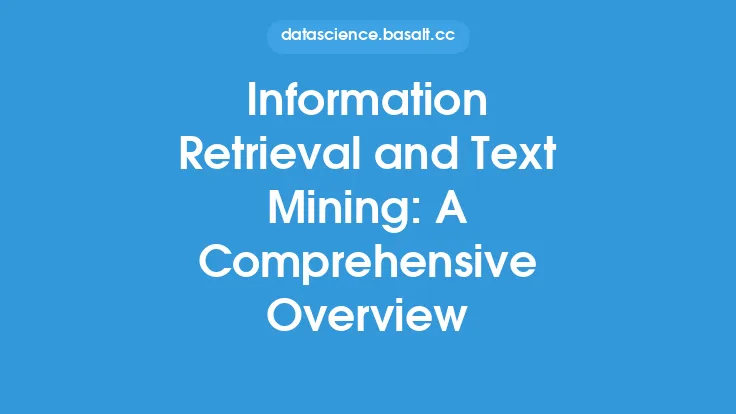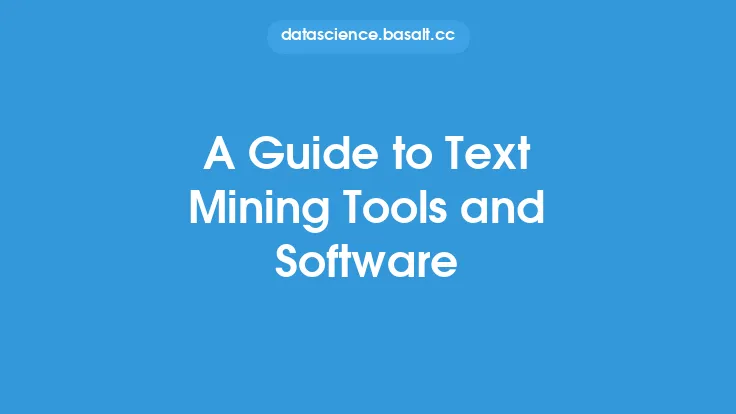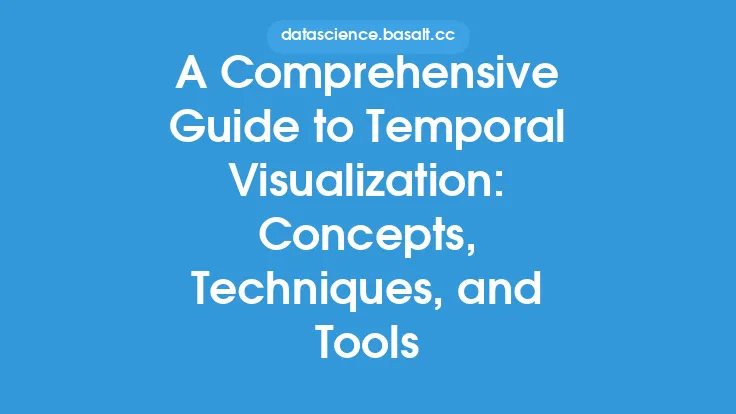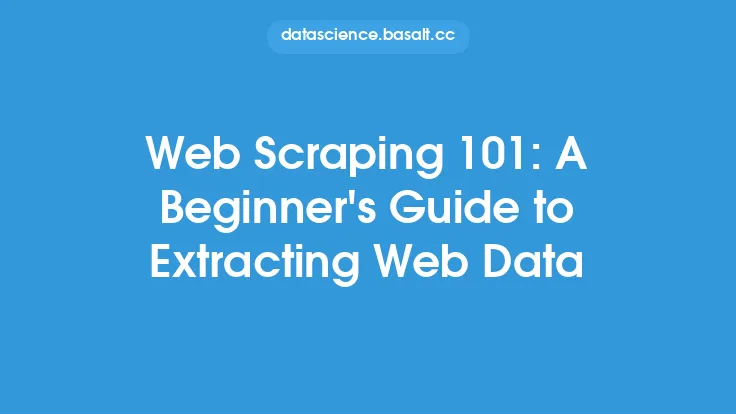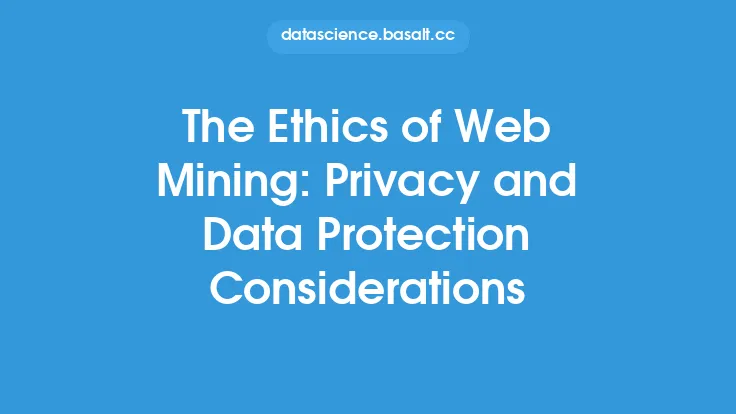The web has become an indispensable source of information, with billions of users generating and sharing data every day. Web mining is the process of automatically discovering and extracting useful information, patterns, and relationships from the web. It involves using various tools and techniques to analyze and extract data from the web, which can be used for a wide range of applications, including business intelligence, sentiment analysis, and recommendation systems. In this article, we will provide a comprehensive overview of web mining tools and techniques, highlighting their strengths, weaknesses, and applications.
Introduction to Web Mining Tools
Web mining tools are software applications that enable users to extract, analyze, and visualize data from the web. These tools can be categorized into several types, including web scraping tools, web crawling tools, and web analytics tools. Web scraping tools, such as Beautiful Soup and Scrapy, are used to extract data from web pages, while web crawling tools, such as Apache Nutch and Heritrix, are used to crawl and index web pages. Web analytics tools, such as Google Analytics and Adobe Analytics, are used to analyze and visualize web traffic data.
Web Mining Techniques
Web mining techniques can be broadly categorized into three types: web content mining, web structure mining, and web usage mining. Web content mining involves analyzing and extracting data from web pages, including text, images, and videos. Web structure mining involves analyzing the link structure of the web, including hyperlinks and web graphs. Web usage mining involves analyzing and extracting data from web logs, including user behavior and clickstream data.
Text Mining and Information Retrieval
Text mining and information retrieval are critical components of web mining. Text mining involves analyzing and extracting insights from unstructured text data, including sentiment analysis, entity recognition, and topic modeling. Information retrieval involves retrieving and ranking relevant documents based on a user's query. Techniques such as TF-IDF, cosine similarity, and latent semantic analysis are commonly used in text mining and information retrieval.
Web Mining Algorithms
Web mining algorithms are used to analyze and extract insights from web data. These algorithms can be categorized into several types, including clustering algorithms, classification algorithms, and regression algorithms. Clustering algorithms, such as k-means and hierarchical clustering, are used to group similar web pages or users based on their characteristics. Classification algorithms, such as decision trees and support vector machines, are used to classify web pages or users into predefined categories. Regression algorithms, such as linear regression and logistic regression, are used to predict continuous or binary outcomes based on web data.
Data Preprocessing and Visualization
Data preprocessing and visualization are critical steps in web mining. Data preprocessing involves cleaning, transforming, and formatting web data into a suitable format for analysis. Techniques such as tokenization, stemming, and lemmatization are commonly used in data preprocessing. Data visualization involves presenting web data in a graphical or visual format, including charts, graphs, and heat maps. Tools such as Tableau, Power BI, and D3.js are commonly used in data visualization.
Challenges and Limitations
Web mining poses several challenges and limitations, including data quality issues, scalability issues, and privacy concerns. Data quality issues arise from the noisy and unstructured nature of web data, while scalability issues arise from the large volume and velocity of web data. Privacy concerns arise from the collection and analysis of personal data, including user behavior and clickstream data. To address these challenges, web mining tools and techniques must be designed to handle large volumes of data, ensure data quality, and protect user privacy.
Future Directions
The future of web mining is promising, with several emerging trends and technologies, including big data analytics, machine learning, and deep learning. Big data analytics involves analyzing and extracting insights from large volumes of web data, while machine learning and deep learning involve using algorithms and models to analyze and predict web data. The integration of web mining with other disciplines, such as natural language processing and computer vision, is also expected to drive innovation and growth in the field.
Conclusion
Web mining is a rapidly evolving field that involves using various tools and techniques to analyze and extract useful information, patterns, and relationships from the web. The field has several applications, including business intelligence, sentiment analysis, and recommendation systems. However, web mining also poses several challenges and limitations, including data quality issues, scalability issues, and privacy concerns. To address these challenges, web mining tools and techniques must be designed to handle large volumes of data, ensure data quality, and protect user privacy. As the web continues to grow and evolve, web mining is expected to play an increasingly important role in unlocking insights and driving innovation in various fields.
